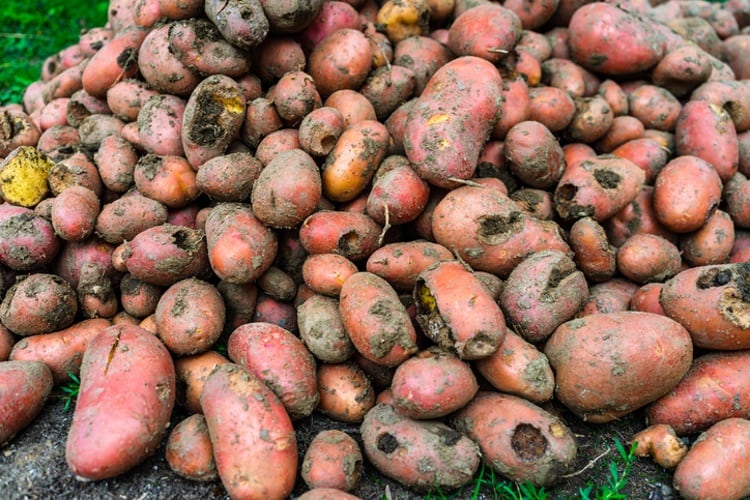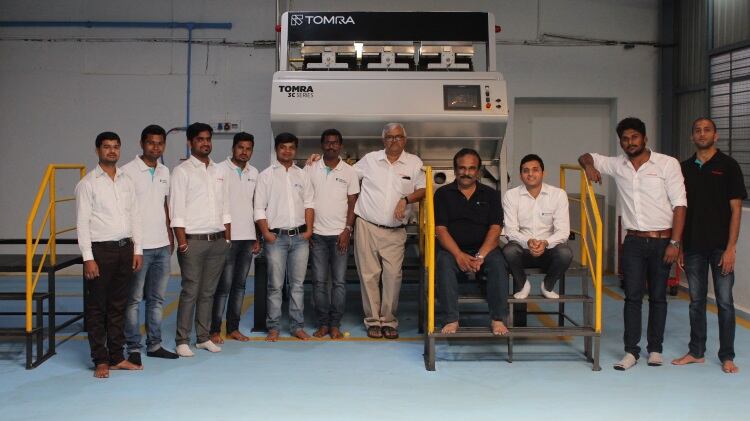
The scale of food loss and waste across the world is almost unimaginable. Almost a third of food across the global supply chain is lost or wasted, equating to 1.6 billion tons annually or 66 tons each second, according to the Un Food and Agriculture Organisation (FAO).
Alarmingly, these huge figures keep growing. According to statistics, 3.3 billion tonnes of CO2 equivalent, a unit based on the global warming potential of different greenhouse gases – a quarter of all emissions from food production – can be attributed to waste either from supply chain losses or consumers.
Yet the world now faces a crisis of a different kind. The pandemic has brought with it its own consequences for the food supply chain and the impact of the lockdown restrictions has increased food waste, which, in turn, has decreased the yields harvested.
Food loss in primary production
It is impossible to accurately calculate food loss in the primary production stage, although the UK’s Waste and Resources Action Programme (WRAP) estimates it is higher than waste from the hospitality, foodservice and retail sectors combined.
Just 24% of the dry biomass harvested from crops and grassland is consumed as food by people, but this figure does include non-edible crops and those grown for animal feed, in addition to food loss. One thing is clear, however; climate change is impacting crop production.
Increased precipitation, rising temperatures and sudden extreme weather occurrences all have an impact. The International Food Policy Research Institute projects that by 2050, suitable croplands for wheat, potatoes, corn and rice will shift due to global warming, in some cases pushing farmers to plant new crops.
The impact is already being felt. Wheat yields have dropped by 0.9% on average each year, according to one study, which is contributing to a 1% annual reduction in consumable food calories from the top 10 global crops. Another study shows a 4% increase in global temperatures - which could happen by 2100 if we don’t reduce our greenhouse gas emissions - could halve corn production in the US. The figures are even higher in food-insecure countries.
Ensuring yields are utilised during the pandemic
The COVID-19 pandemic has brought with it a huge number of consequences for our health, economies and the environment. However, a huge area that has suffered is the global supply chain, meaning farmers have been negatively impacted when it comes to making the most out of their high-quality yields. Although consumer demand within shops has stayed consistent and in certain cases even boomed as people were forced eating home, restrictions and lockdowns within sectors such as leisure and hospitality have led to a decrease in demand.
For example, in the Netherlands, about on3 million tons of potatoes will have to be wasted due to the pandemic, which is about 13% of the country’s total potato production.
Companies are now faced in creating initiatives to not only encourage an increase in produce consumption, but also alternative approaches to how they utilise the produce.
In Belgium, citizens were encouraged to eat more French fries to help offset the slump caused by the global pandemic. According to trade body Belgapom, 750,000 tonnes of potatoes would not be processed this year and being mostly varieties not suitable for other culinary uses, the need to increase French fry consumption was key to ensure produce wasn’t wasted.
Supermarket chain Tesco, along with a raft of other retail and CPG companies, has donated large amounts of food to charitable causes in an attempt to keep produce within the supply chain, rather than being wasted.
Using innovation to reduce food waste
With the global population still on the rise and crop production set to fall, one vital requirement is to optimise yields, bringing forth processing innovations like food sorting technologies, which play an important role further along the line.
Crucially, these innovations can sort crops to customer expectations more effectively. Tomra’s smart surround view, for example, can reduce false rejections by 20%, exponentially increasing the amount of good final end product, in turn limiting waste. But to be effective in supporting global yields, they must be available for growers and processors in developing countries, too.
Take the Tomra 5A potato sorter, which employs two reject exits to help to send product that is typically have been sent to waste for rework.
The sorter’s first reject exit allows for foreign objects and unusable product to be removed from the food processing line while the second exit enables the removal of defective produce that may be reworked or used for another purpose. This doesn’t only reduce potential food waste but maximizes the value of each piece of produce.
The company’s technology does not stop there and includes a gamut of equipment focusing on performance patterns, using insights from data to map specific trends and allowing processors to optimise yield from a central control point.
If we can reduce food loss and waste, we can limit the impact by climate change and the pandemic, too. It’s a big task, but with continued innovation from thought leaders, the opportunities are endless.



